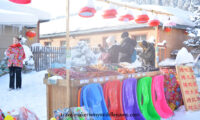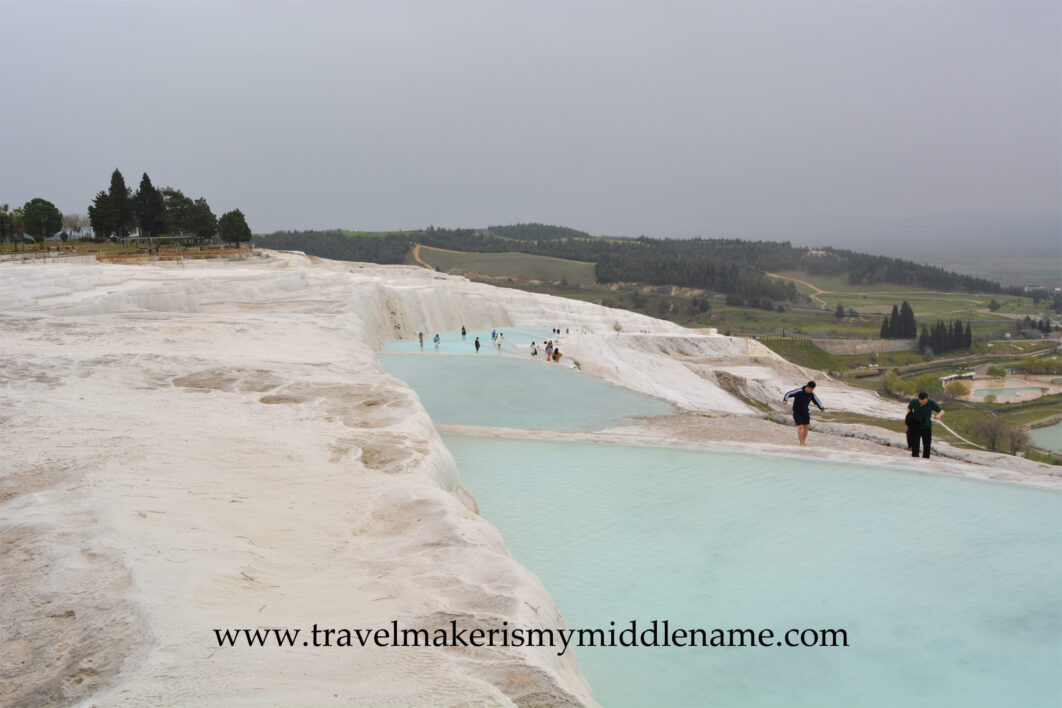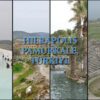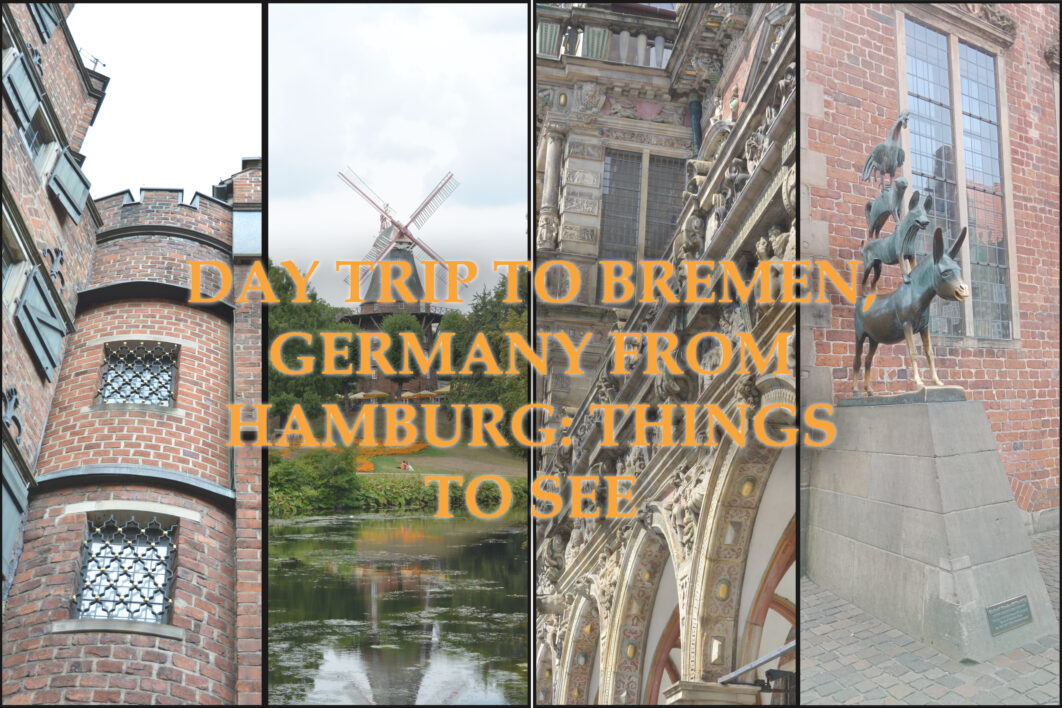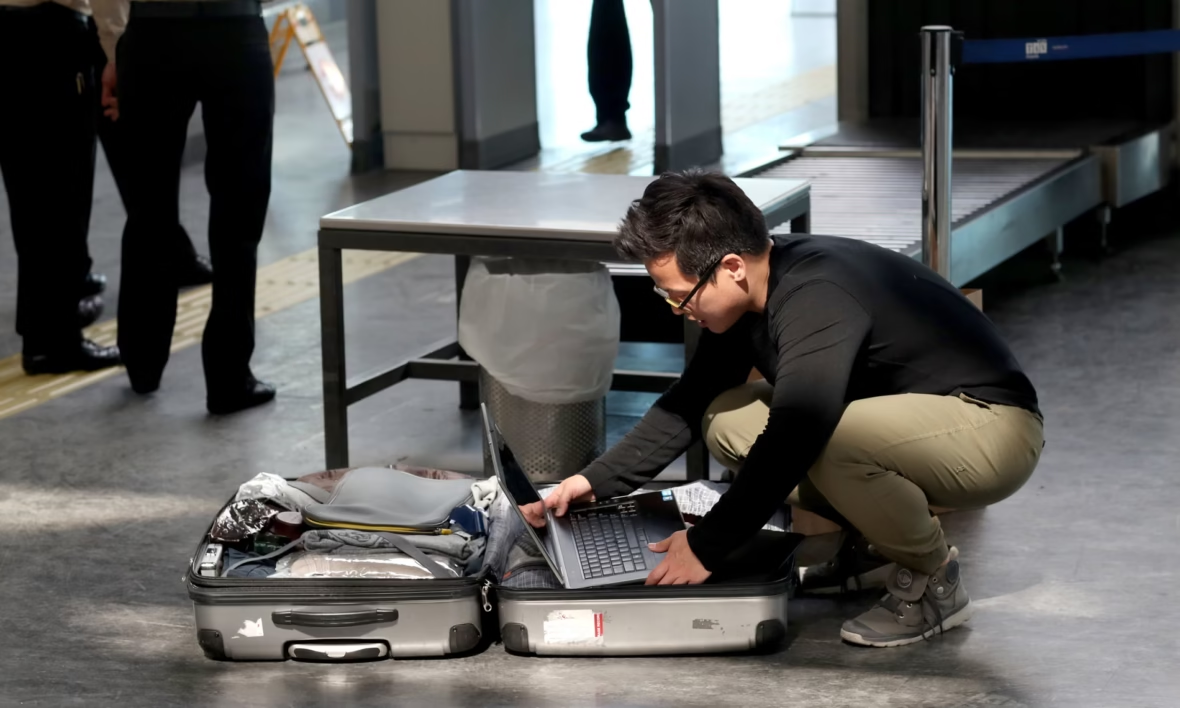Last Updated on: 1st November 2025, 06:10 pm
You would almost certainly have seen widely circulated stunning pictures of white terraces filled with blue water pools, and might wonder what they are and if they are natural. These terraces are natural formations of calcium carbonate and are what is called “travertine terraces”, even if the marketed postcard-perfect photos are often heavily edited.
What are travertine terraces?
Travertine is a type of limestone, and the terraces are formed when natural, hot spring water rich in calcium carbonate flows over the natural hilly landscape. As the water evaporates, it leaves behind a crust of calcium carbonate. Over time, this forms the stepped terraces filled with pools of water that is both fascinating to geologists and tourists.
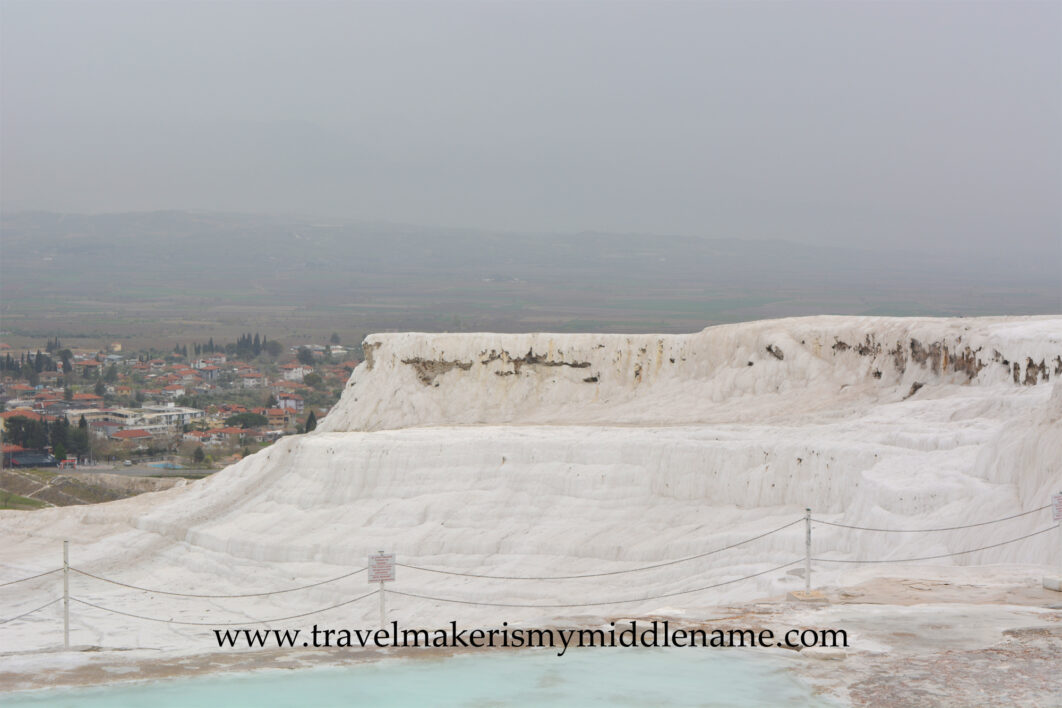
There are many travertine terraces around the world, and the ones in Pamukkale, Türkiye is among some of the most famous.
Pamukkale’s Travertine Terraces
Pamukkale is actually a district in the province of Denizli in the south western part of Türkiye, and is also the site of the ancient city of Hierapolis. The travertine terrace by the same name is just one of several attractions there in the park, but possibly the most famous one.
The name “Pamukkale” literally means “Cotton Castle” (pamuk means cotton, and kale mans castle), and one can see where the name came from when you look at the naturally formed white terraces from afar.
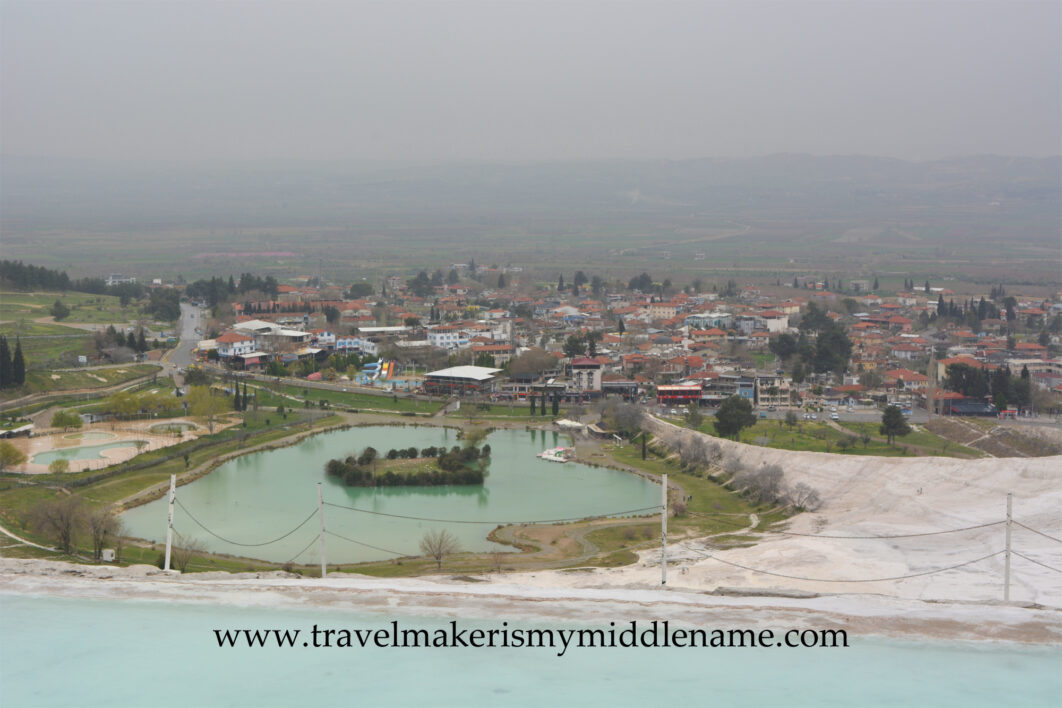
Parmukkale is supplied by natural hot spring water sources, which both created and serves the travertine terraces. Naturally, water flows downhill. Visitors approach the terraces from the top, to where they walk from the car park nearby.
The calcium carbonate deposits of Pamukkale took hundreds of thousands of years to form into these terraces. Solidified dripping deposits of calcium carbonate form the curtain-like vertical structures. The white structure upon a hill when seen from afar and the large expanse of white must have been quite a sight to ancient residents thousands of years ago.
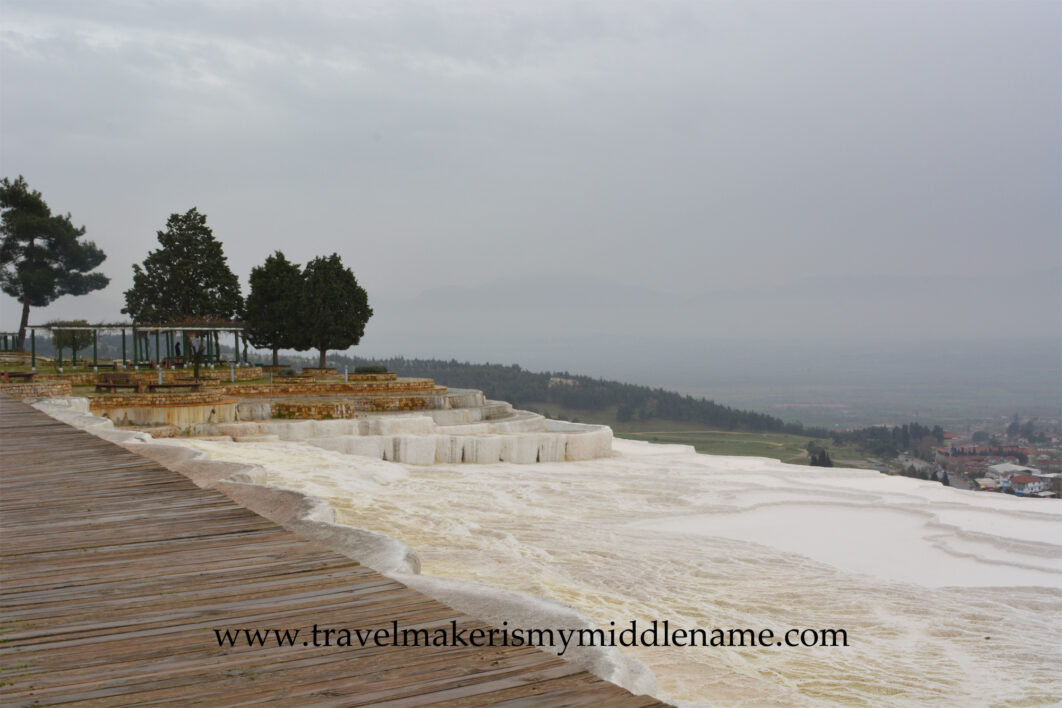
Why are the travertine terraces so famous?
If for nothing else, Pamukkale is a famous scenic attraction and a popular topic on social media. Many of the photos of Pamukkale shared to social media are heavily edited in order to gain more views and popularity, which adds to the desirability and popularity of the destination.
Like all hot springs, Pamukkale’s mineral-rich hot water springs have been touted for their health benefits. In ancient times, people travelled from far and wide to bath in its supposedly healing waters, for almost every ailment under the sun in the hope to be rid of their ailments. When travelling and visiting sites of ancient historical significance, one must take into consideration the appropriate time context. In ancient times, in the absence of modern medicine and scientific knowledge, naturally existing hot water would have indeed appeared to be a fascinating element of nature. People would have seen any rare and miraculous occurrences as potentially healing. Jade worn by the Chinese is another example.
Today, hot springs are still touted to treat skin diseases and stop joint pain.
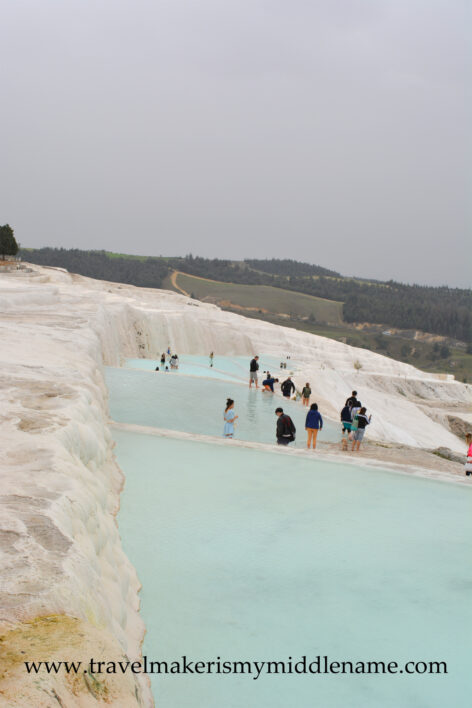
In truth, there is no scientific evidence that natural hot springs can treat or cure any ailment, but it doesn’t stop people from wanting to bath in it.
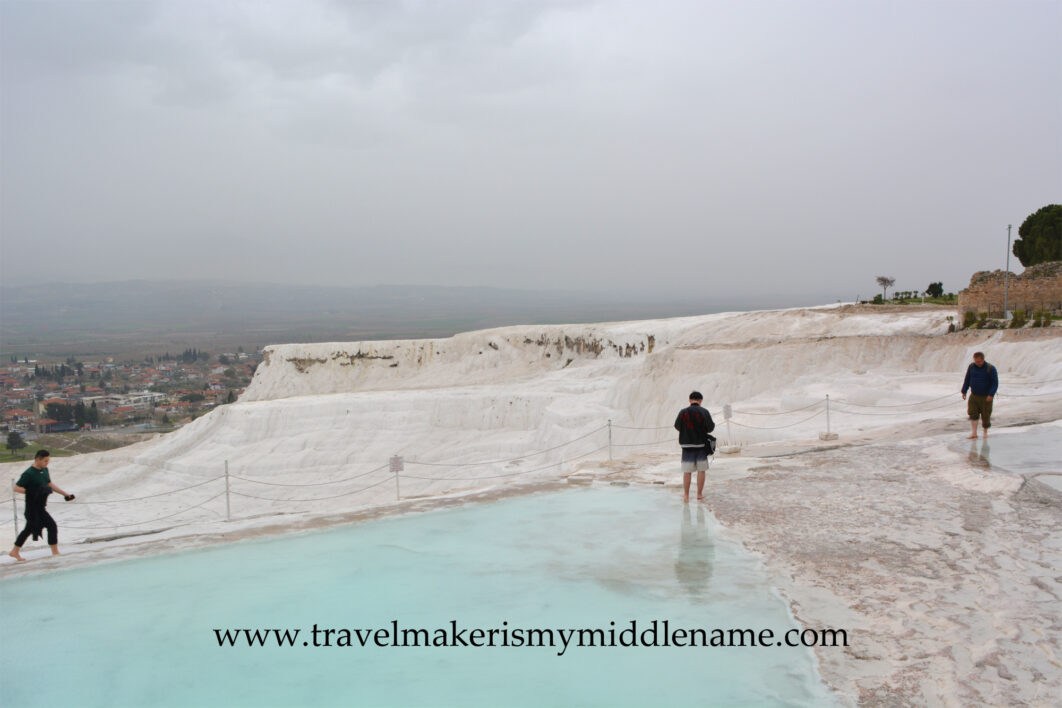
Hot spas, whether man made or natural, can relieve some joint or muscle pains due to the temperature. It has nothing to do with the naturalness of the hot spring itself.
While it can relieve some skin problems due to the sulphur in it, one can also buy sulphur soap.
Natural hot springs do not have anything intrinsically that makes it a wonder cure for these ailments. According to a recent study, many people believe that hot springs are good for you because it is natural and contains no chemicals. This is inherently false, since minerals in mineral water are chemicals. The closest healing power that natural hot springs have that man made hot spas do not are the sulphur content that can relieve some skin conditions, and sulphur is a chemical.
Today, most people go there mostly for the photo opportunity or for the sake of going in one of the most famous natural hot springs. While visitors are allowed to wade in the travertine pools, the water depth and the temperature will vary in the different pools and by season, so you won’t be getting a miracle cure there. The water at the top-most pool is not particularly warm in April when I visited. Bathing is only allowed in certain pools, and you are required to take off all shoes to prevent damage to the calcium carbonate terraces. You will also be required to wear appropriate clothing.
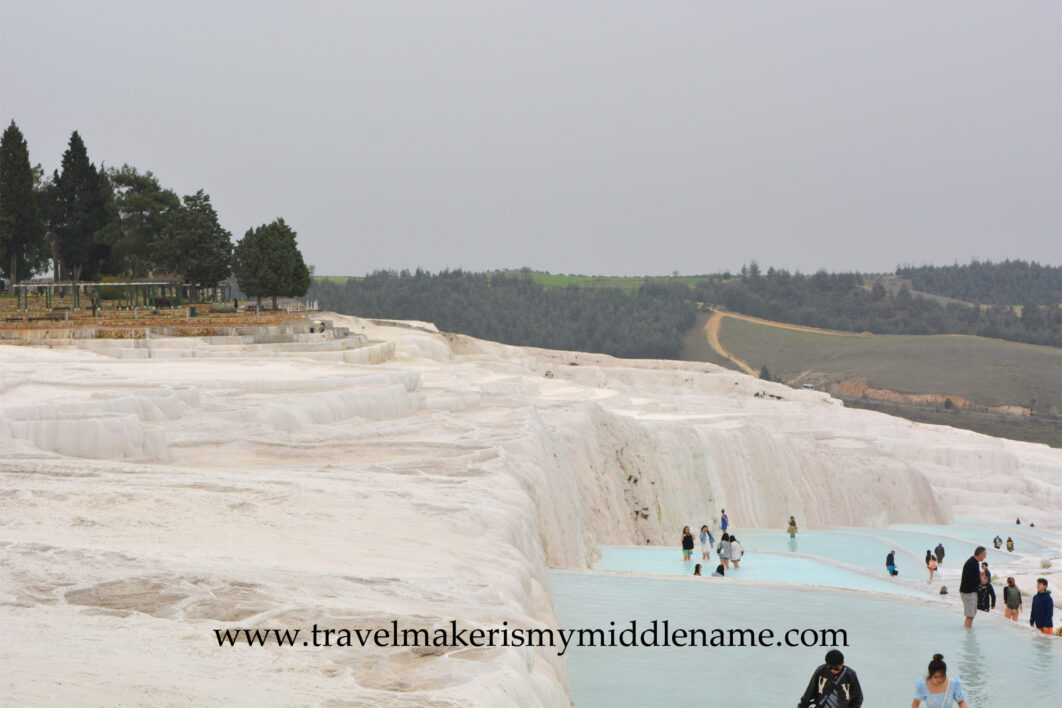
Preparing for your trip to Pamukkale Travertine Terraces:
There is not a lot of preparation you need to do to visit the Pamukkale travertine terraces. You won’t be allowed to wear shoes in the travertine pools, however, the Cleopatra Pools are also on site nearby. If you intend to go there, you might want to bring slippers to wear out of the pool there. If you intend to get fully wet in the travertine terraces, you should bring a dry towel, especially if it is going to be a bit cold. The area can get a little windy as it is on a hill. I visited in April and these photos were taken on a cloudy day, but the water colour is still a beautiful natural light-blue.
Commonly asked questions
Q: Is the pool accessible?
A: I have been to several attractions in Turkiye and I have found them to be pleasantly accessible and pleased with the thought and care that went into making attractions as accessible as possible. Unfortunately, the terraces are a different nature. The majority of the pools are not accessible to wheelchairs, however, there is a shallow portion at the very top where the board walk is (see the previous photo showing the timber boardwalk) that meets the terraces, this section has a shallow pool that some children play in (not shown in the photo but it looks a little like the photo with the three people walking along a railing). It may be possible to access this area with help.
If you arrive with a tour group, you are most likely to arrive at the top because the tour buses go there. When you arrive at the terrace from the car park, you will already be at the highest point, in other words, if you want to explore the terraces, you will be making your way down (which is easier than making your way all the way up from the bottom). There is also an option to arrive at the bottom, although I did not do this. Walking up through the terraces will be difficult and time consuming since the terraces can be slippery, and not the fastest way to get to the top, where the other attractions (including a gift shop right at the top of the terrace) are.
There are seats around the top of the terrace to sit and rest. The terraces are open air.
Q: Can I exit and enter again on the same ticket?
A: No. One ticket allows only one entry. Some other sites, such as the Cleopatra pool, requires a separate ticket. Depending on how deeply you want to investigate all the sites, you might find it worthwhile staying overnight in Pamukkale village. The day tickets can be expensive though, over 1000 Turkish Lira, so it is better to go early in the morning.
How to get to Pamukkale
The most cost effective method to get to Pamukkale is to join a local tour in Antalya or Izmir, which is about 3 hours by road, or about 2 hours by road from Selçuk. Most tour groups will take you there and give you free time to explore the place. When picking a tour, you can find a tour group that will maximise time there because there is quite a lot of things to see there, and if you want a guided tour, ask for that specifically.
Opening hours and tickets:
Pamukkale opening hours vary by season and can be found on their ticket booking site:
https://visit-pamukkale.com/pamukkale-opening-hours/
The department of culture and tourism official information site only offers general information and does not sell tickets:
https://www.ktb.gov.tr/EN-36238/pamukkale.html
Thank you for visiting my website. Please donate to my personal fundraiser if you can, or share my fundraiser if you cannot. I wouldn’t be asking if I had other options, and if everyone pitched in, my goal can be achieved. You can read about me on my About page. Thank you.
©All rights reserved for all content and photographs, usage on 3rd party sites are forbidden without permission. Photos are taken by author unless otherwise stated.


